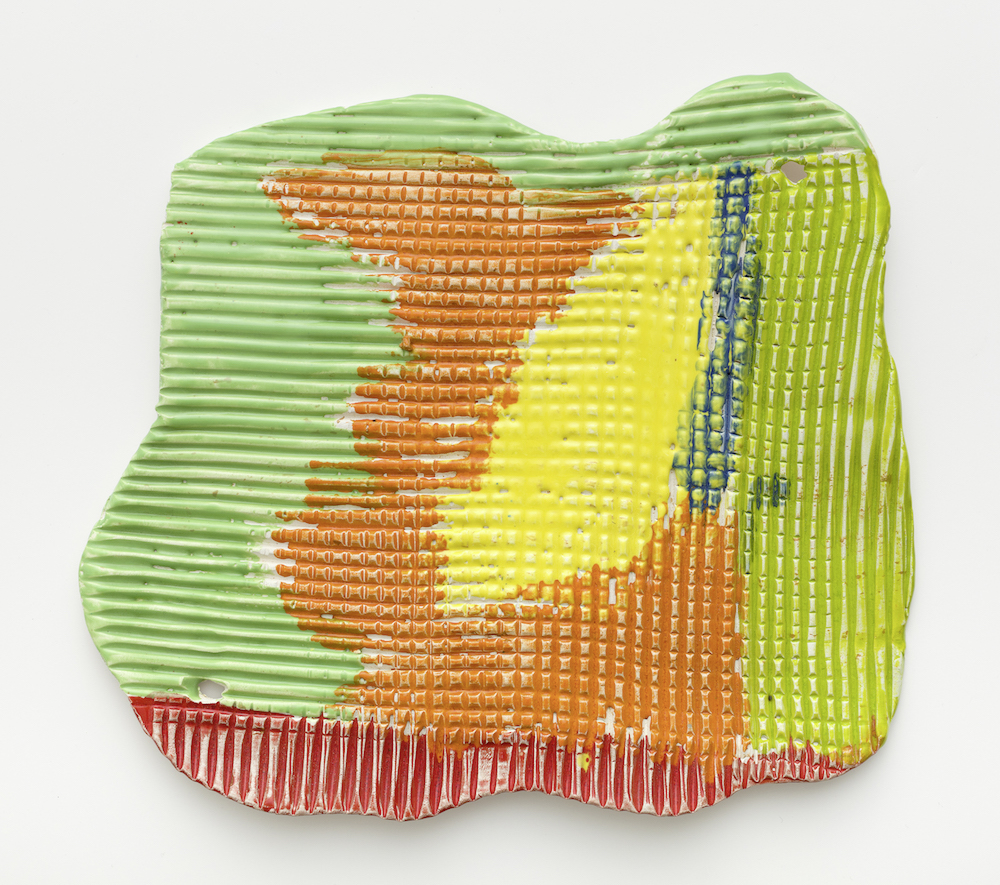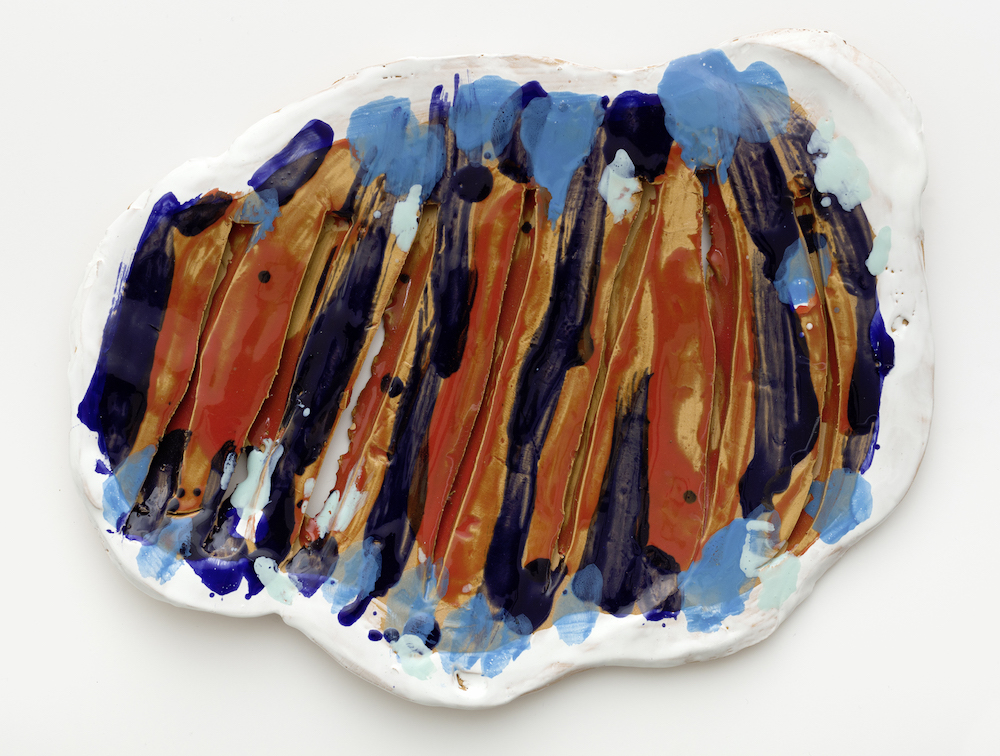Next month Mexico-based curator Chris Sharp opens As if in a foreign country at Vienna’s Galerie nächst St. Stephen Rosemarie Schwarzwälder. The exhibition assembles thirteen artists from around the world, considering ideas of hybridisation and foreignness as part of city wide takeover curated_by.
Can you tell me a bit about As if in a foreign country?
As if in a foreign country is a group exhibition that features twelve artists from Europe, the States and Latin America, of varying generations. Paying homage to the domestic nature of the gallery, which is located in an apartment and as such all but seeks to decorate it, the exhibition plays with the notions of origin, hybrid, modernism, the domestic, private and public. Basically my hope is that you will walk into this gallery and not be sure if it’s a gallery or an apartment, and likewise be just as filled with doubt about the time period and origins of the work you’re looking at. The hope is not so much to collapse space, time and even function, as disclose it for the mélange it already always is.
What was the starting point for curating this exhibition?
It had several points of departure: Rosemarie Schwarzwälder’s beautiful, semi-palatial, natural-light-filled apartment gallery and its illustrious history, which has its roots in European fin de siècle modernism; Diedrich Diederichsen’s provocative prompt for curated_by, which revolves around the notions of homage and the hybrid; and the unforgettable opening sentence of L.P. Hartley’s The Go-Between (1957), ‘The past is foreign country: they do things differently there.’
How do ideas of the past and foreignness merge in this show?
As contested sites and notions which are both presupposed by their equally contestable counterparts: the contemporary and the local, or native. While I have a great deal of respect for artists and thinkers who try to deal with contemporary issues — such as the impact of social media on our lives, etc — I think it (the so-called contemporary) is not so much overrated as it is a myth. To quote Faulkner, ‘The past is never dead. It’s not even past.’ Time or temporality is not so black and white. Nor are the impact of given periods on artists.
The existence of the so-called foreign is even more debatable. I mean, doesn’t the phrase, ‘foreign country’ sound a bit… if not quaint, then unsettling? As if it belonged to the golden age of European colonialism? Conjuring up, at best, old, faded issues of National Geographic? Besides, aren’t ‘foreign countries’ just ‘destinations’ at this point? At its worst (as if colonialism wasn’t bad enough) it seems to merely collude with the twin atavistic evils of nationalism and isolationism.
The idea of the ‘hybrid’ is mentioned in relation to this exhibition, where different traditions come together in many of the artists’ work. Do you feel we’re moving more towards a hybrid existence — in relation to the ‘foreign’, past and present, and ways of making work — than ever before?
Yes, it would seem so. But in a way, hasn’t the history of western art always been characterized by hybridity? Few artists demonstrate this better than Manet, aspects of whose work, namely, the commitment to hybridity, feel very current. At this point it could be said that the frame of reference is merely expanding and becoming more reciprocal. And finally, yes, perhaps now, the origin of given cultural signifiers is harder to locate than ever, given that they are in a state of continual cross-fertilization and transformation.
You’re based in Mexico and are curating this show in Vienna — two very different places. Do you find this exploration of foreignness has shown you things about your own way of working or encountering different places also?
The fact that I am an American based in Mexico and doing a show in Vienna does play a role in my thinking here. Ever since I moved to Mexico from Paris three and a half years ago, and by extension to a new region of the world, my relationship to the native, nationalism and the so-called foreign so on and so forth have changed a lot. Soon after moving here and opening a space (Lulu), I began to understand that there is a great deal of unresolved anxiety in Mexico and Latin America in general around these notions, especially vis-à-vis Europe and the US – the perpetuation of which (the anxiety) the latter are totally complicit. For instance, the designation ‘Latin American artist’, the baggage that comes with and attendant, regional surveys in which it is showcased. Incidentally, it’s hard to believe that in the 21st century we still have regionally specific, nationalistic or ethnic surveys of art. I say this because the artists I am working with in the show who come from Latin America, such as Lucas Arruda (Brazil), José Antonio Suárez Londoño (Colombia), and Rodrigo Hernández, Jimena Mendoza and Aliza Nisenbaum (Mexico) all draw from a variety of traditions that go beyond their place and time. Arruda is clearly thinking about Courbet as much as he is thinking about the Venezualen Armando Reverón. José Antonio’s debt to Paul Klee is enormous, while Rodrigo Hernandez and Jimena Mendoza both hybridize specific strains of European modernism with the formal idiom of pre-Colombian artifact, and Aliza Nisenbaum’s frame of reference is known to include and combine the patterns of artisanal Mexican textiles with the Intimisim of Bonnard and Vuillard, among other things. Do their references to European modernism make them any less ‘Latin American’? Or more? Is their so-called Latin Americanness not located precisely in their will to hybridize traditions? At the risk of aligning myself with a discourse of genius, the more time I spend in art, the more I believe that great art and the artists who make it have a much greater impact on their place and time than that place and time might have on them. In other words, they are not so much symptoms as they are anomalies. And while they are not immune to time and place, not to mention their specific cultural matrix, these are but elements in the overall constitution of whatever they produce.
Which artists are you particularly excited about presenting in this show?
To say that I love them all, many of whom I have worked with before, in equal measure is a bit of cliché. What I’m really excited about is seeing them interact together, how they will modify, alter and ideally enrich readings of each other’s work. Just the idea of Lucas Arruda’s and Juliette Blightman’s works together in the same room. Or the sculptures of Jimena Mendoza with Sonia Leimer. To say nothing of the strange, unplaceable beauty of the painting of Scott Olson juxtaposed against a small etching by José Antonio. This, I am convinced, will be very beautiful. And finally how they, as a whole, will ideally engage the essential ambiguity of the private and pubic nature of the apartment gallery and its charged relationship to the history of modernism, function and decoration.
‘curated_by Chris Sharp: As if in a foreign country’ runs from 9 September until 22 October at Galerie nächst St. Stephen Rosemarie Schwarzwälder as part of city wide programme curated by_vienna. Chris Sharp is a writer and independent curator based in Mexico City, where he and the Mexican artist Martin Soto Climent run the project space Lulu. schwarzwaelder.at









